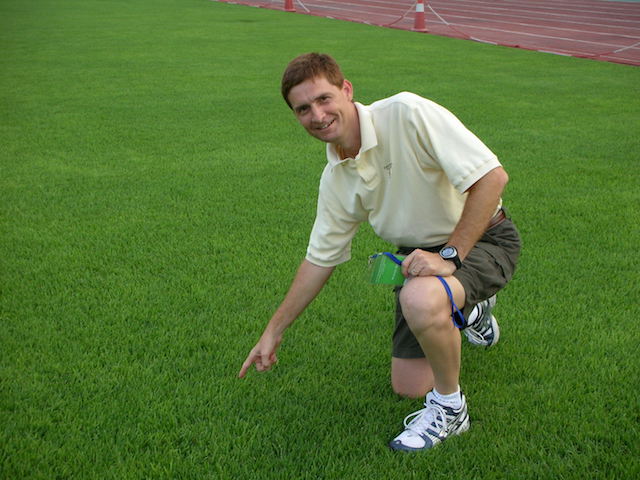From the September issue of SportsTurf, Dr. Grady Miller’s “Q and A” column:
Q: What are my options to reduce my field’s compaction so it is not so hard?
A: My July issue column on measuring field hardness encouraged several folks to send me a message. Most of you had questions related to alleviation of compaction/hardness. So I thought I would follow up my previous “Q and A” to address those questions related to alleviating soil compaction.
First, I should mention that my co-columnist, Pamela Sherratt from Ohio State, wrote a great spring aeration “Q and A” as recently as April 2018. Go back and review that article online if you get a chance. Most of your follow-up questions were about either aerification frequency or new equipment technology for aerification, a little different than the subject Pam addressed back then.
Let me briefly address the issue on aerification frequency. If a regular reader, you may know that I encourage frequent aerification. There are few things that can turn around a high-use, compacted field like aggressive aerification. While using the techniques I mentioned in July’s article may be valuable for monitoring field hardness and determining the best time to aerify, it is not a requirement. Most fields will benefit from aerification regardless of their compaction status. So, if you are thinking about aerification then you field is probably ready for its next aerification.
The more common follow-up question was how should I aerify given the new technology currently available? It is interesting to consider that one can now aerify a sports field with steel, water, or air. I know, it sort of sounds like an 80’s rock band. But even before big-hair bands, aerification was accomplished by pushing either steel solid spikes or hollow tines into the soil. The resulting hole diameter, depth, and spacing varied based on the equipment used. The solid spike pushed impacted soil away from the spike toward the bottom and sides of the hole. A hollow tine allowed the impacted soil to be removed from the profile and then deposited on the soil surface. Another take on solid tine aeration is the oscillating, solid-tine aerators. This uses an oscillating motion of a solid spike to fracture the soil. For this reason the process is often called shatter tining or the more commercial label, aeravating.
Using water and air for aerification, while not new, has continued to be refined over the last 25 years. Pulsing a stream of water or air are like solid tines when it enters the soil surface, but as it impacts soil particles it disperses within the profile to provide some lateral shattering. The benefit is there is less surface disruption while one may still get a pretty substantial void below the surface. A University of Tennessee study found that air injection reduced surface hardness by 19% immediately after treatment. Long-term effects were not reported, but the positive to using air injection is that with minimal surface disruption, they could be used during the playing season with minimal surface disruption.
I am also increasingly hearing the term decompaction to describe a way to remove compaction that is different from aerification. From an equipment perspective what is usually used to decompact a soil is some type of vertical linear aerator. These are sometimes called rotary decompactors. One commercial name that is used today is the Shockwave. The Shockwave uses slowly rotating thick steel knives to vertically slice through a soil profile. With a roller following the knives, there is minimal surface disruption. In some respects, “shockwave” is a bit like a deep verticutting of the soil profile. In a recent Iowa State study, hollow tine aeration increased water infiltration by 148% and shockwave aerification increased it by about 70%. Old-fashion solid tine aerification increased infiltration by only 17%.
Longevity of these treatments is a common question. Several researchers are presently looking to answer this question with the new technology, so stay tuned for more of that information. We do have some longevity data on more traditional core aerification. In an Auburn University study they evaluated deep-tine aeration on compacted native soils growing Tifway bermudagrass over time. Aerations were applied either once (July), twice (April and July), or four times a year (January, April, July, and October) with 0.75-inch solid tines that penetrated 8 inches on 4-inch spacing. Despite the total area impacted by those big tines going down deep, the effects only lasted about 1 month on heavily trafficked turfgrass. This study proved that turf managers should aerate more than just once or twice a year.
While not normally considered an aerification method, fraze mowing could be used to alleviate soil compaction since the zone of greatest compaction is often near the surface. By removing the top surface layer with a fraze mowing, compaction can be carted off the field. Obviously this is a pretty drastic technique to use to reduce compaction since the entire turfgrass surface is removed. At least fraze mowing results in a smooth surface unlike the ultimate remover of compacted soil—a chisel plow and rototiller.


